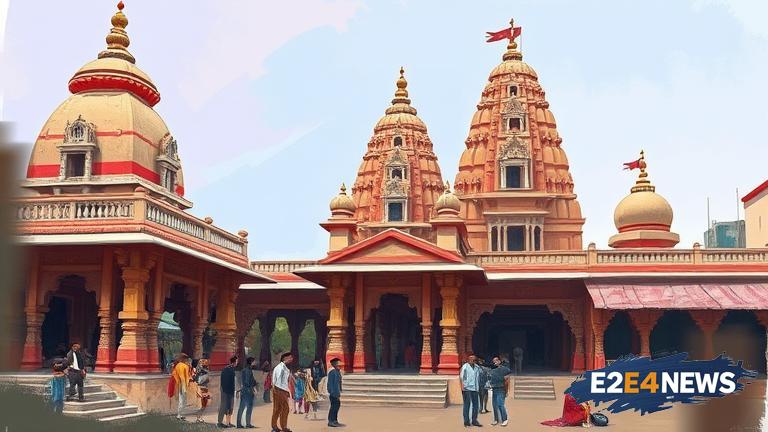The Supreme Court of India has been briefed by the government on the proposed ordinance for the Banke Bihari Temple in Vrindavan, which aims to enhance the overall experience for devotees. The ordinance is expected to bring about significant improvements in the facilities and administration of the temple. The government has assured the court that the new ordinance will prioritize the needs of the devotees and ensure a more efficient management system. The Banke Bihari Temple, located in the holy city of Vrindavan, is one of the most revered temples in India, attracting millions of devotees every year. The temple is dedicated to Lord Krishna and is known for its unique and vibrant festivities. However, in recent years, the temple has faced several challenges, including overcrowding, poor sanitation, and inadequate facilities. The proposed ordinance seeks to address these issues by introducing better crowd management systems, improving sanitation and hygiene, and providing more amenities for devotees. The government has also proposed the establishment of a new administrative body to oversee the management of the temple. This body will be responsible for ensuring that the temple is run in a transparent and efficient manner. The Supreme Court has been monitoring the developments closely and has expressed its satisfaction with the government’s proposals. The court has also emphasized the need for the government to ensure that the rights of the devotees are protected and that the temple is managed in a way that is consistent with its religious and cultural significance. The government has assured the court that it will work closely with the temple authorities and other stakeholders to ensure a smooth implementation of the ordinance. The proposed ordinance has been welcomed by devotees and temple authorities, who believe that it will help to improve the overall experience of visiting the temple. However, some have also expressed concerns about the potential impact of the ordinance on the traditional practices and customs of the temple. The government has assured that it will take into account the concerns of all stakeholders and ensure that the ordinance is implemented in a way that is sensitive to the temple’s cultural and religious heritage. The Supreme Court’s intervention in the matter is seen as a significant step towards ensuring that the Banke Bihari Temple is managed in a way that is consistent with its importance as a cultural and religious institution. The court’s emphasis on the need for better facilities and administration is also seen as a reflection of its commitment to protecting the rights of devotees and promoting the well-being of the temple. The proposed ordinance is expected to have a significant impact on the management of the temple and is likely to set a precedent for the management of other religious institutions in India. The government’s efforts to improve the facilities and administration of the temple are also seen as a part of its broader efforts to promote tourism and cultural heritage in the country. The Banke Bihari Temple is an important part of India’s cultural and religious heritage, and its management is a matter of significant public interest. The Supreme Court’s intervention in the matter is seen as a welcome step towards ensuring that the temple is managed in a way that is consistent with its importance and significance. The proposed ordinance is expected to be implemented in the coming months, and its impact will be closely monitored by the Supreme Court and other stakeholders. The government’s efforts to improve the facilities and administration of the temple are also expected to have a positive impact on the local economy and community. The temple is a significant source of revenue for the local community, and its improved management is expected to attract more devotees and tourists to the area. The proposed ordinance is a significant development in the management of the Banke Bihari Temple, and its impact will be felt for years to come. The Supreme Court’s intervention in the matter is a reflection of its commitment to protecting the rights of devotees and promoting the well-being of the temple. The government’s efforts to improve the facilities and administration of the temple are also a part of its broader efforts to promote cultural heritage and tourism in the country.





